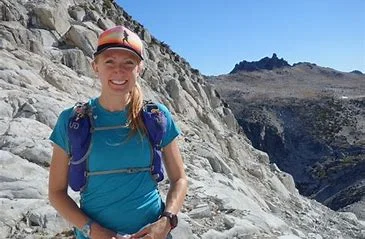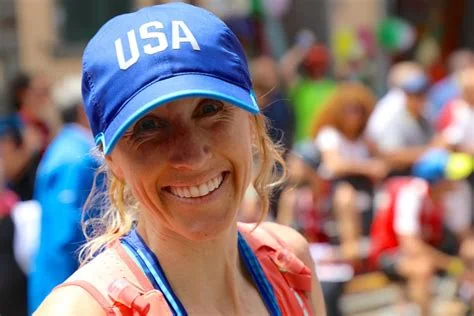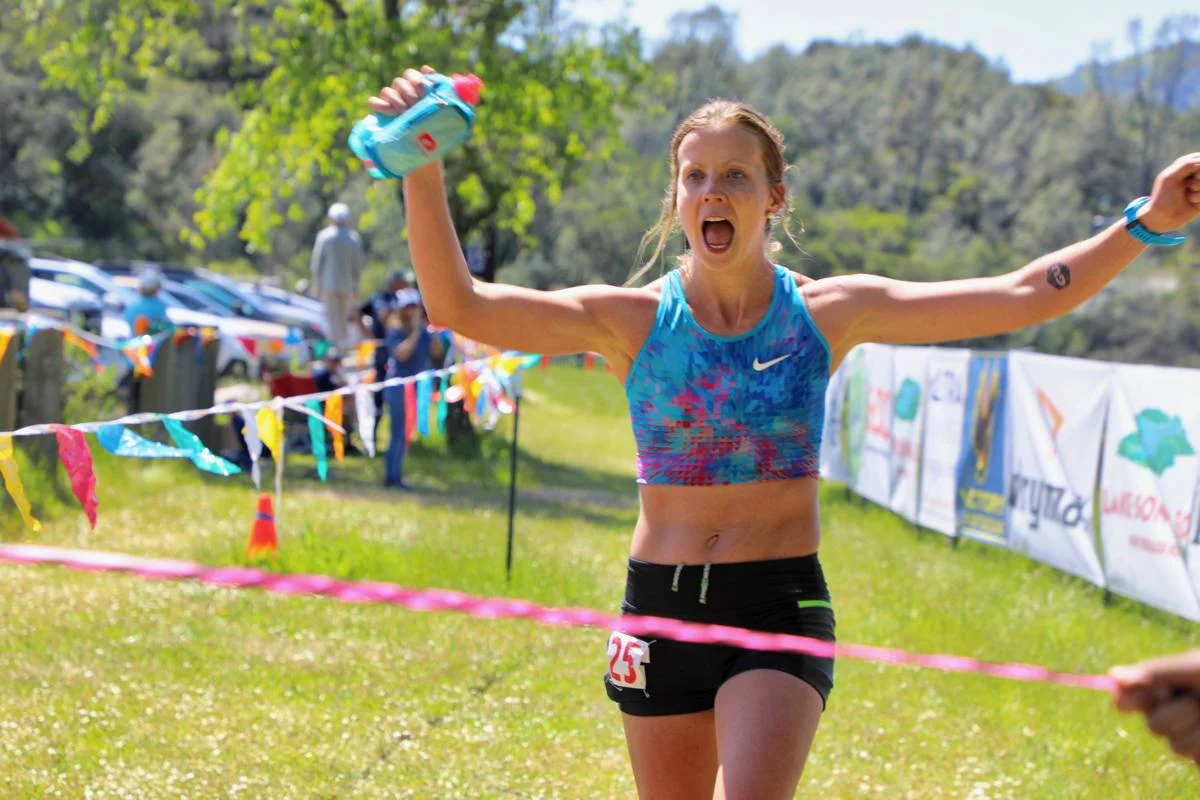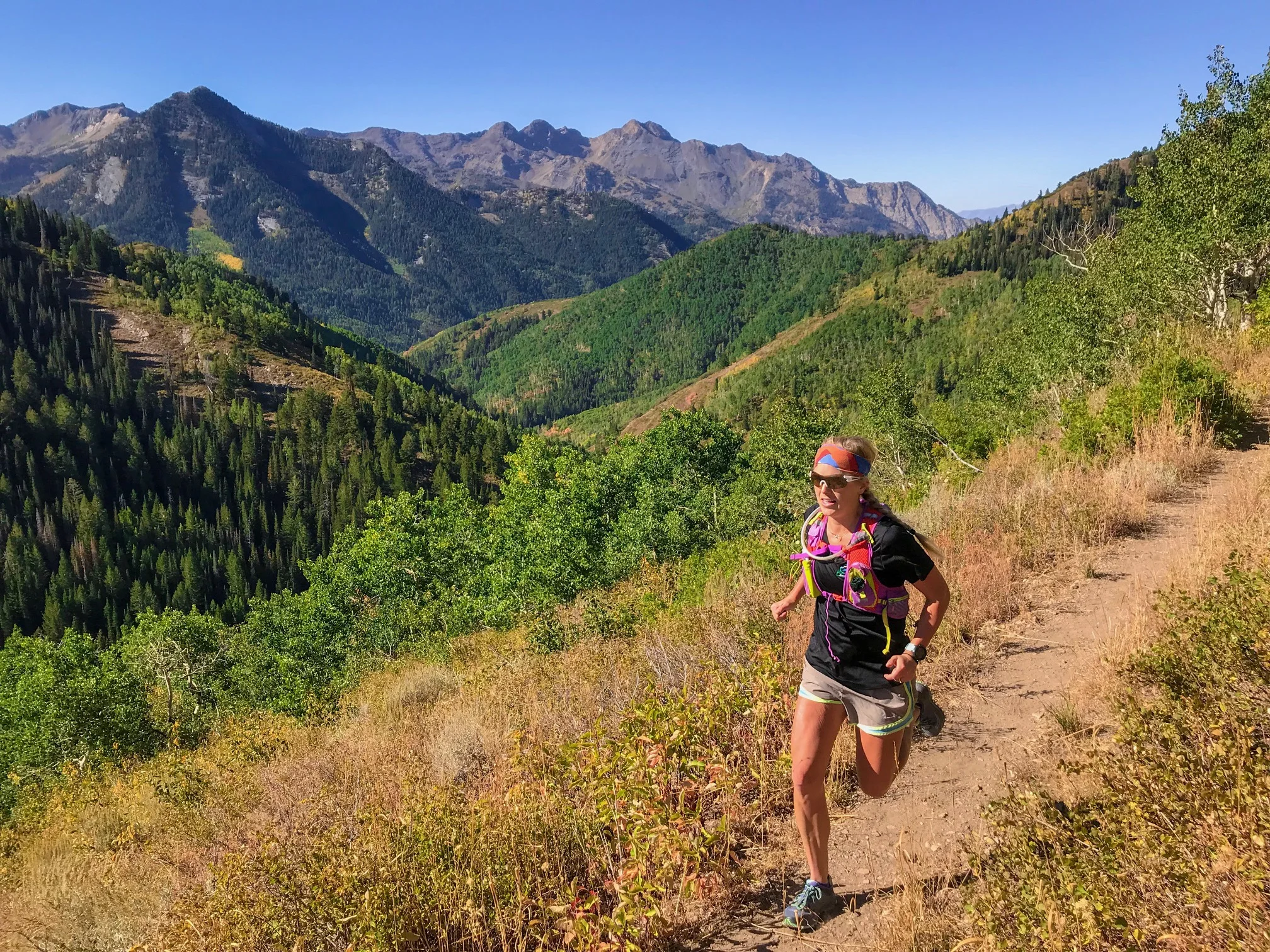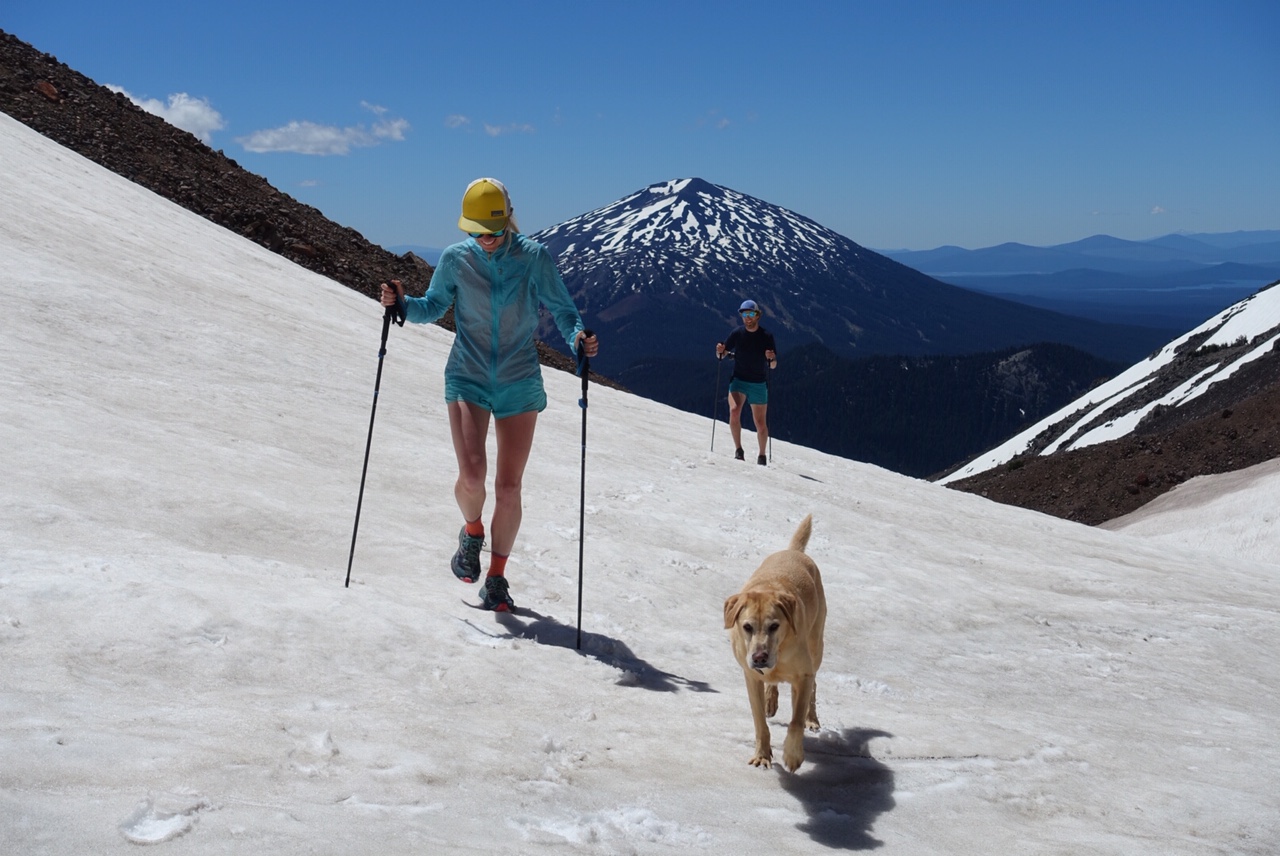Trail Running for Beginners: Tips From the Experts
/So you want to start trail running. Awesome! But where to begin? I get this question a lot, but unfortunately I am no expert. Sure, I love long miles on the trails but I’m also ‘that’ girl carrying a beer in her pack, so my advice should definitely be taken with a grain of salt. So I spoke to some experts in the field (and luckily for me, some of my closest friends and women I admire) to get their advice. These women have all won races, balance a full time job with their running careers, and are some of the most humble people in the sport. Each one of these inspirational athletes adhere to a different style of training, racing and recovery, and have graciously shared with me their best tips for those who want to start trail running.
1) Kaytlyn Gerbin
Photo credit: Ely Gerbin
Kaytlyn is a force to be reckoned with, both on and off the trails. When she’s not crushing ultramarathon races and crazy weekend mountain adventures, she works as a bioengineer for the Allen Institute. One (of the many) things that deeply inspire me about her is that she didn’t start running until college! It just goes to show you that it’s never too late to try something new. Her weekend adventures and weekday run commuting have inspired me for years, and it has been exciting to watch her inspire thousands of others through her notable 100-mile performances, such as her recent win and new female course record at the Bear 100 and her 2nd place finish at Western States 100 in 2018. She also just crushed the Trans Gran Canaria 128km, taking second place woman! And if that isn’t inspiring enough, she traveled to Spain last year to represent the US at the Trail Running Championships.
Kaytyn’s advice? “If you’re a hiker but want to try trail running, swap your boots for trail runners on your hikes. Throw in some shorter run segments by walking uphill and jogging parts of the downhill. Don’t worry about pace and switch back to hike-mode if things get really technical! If you’re a regular road runner and want to start trail running, ignore your pace. Road running does not equal trail running pace! Variable terrain, winding trails, ups and downs, etc all slow down your mileage pace while your effort may still be high. Start on less technical, wider trails… or don’t! But then care less about your pace, and remember that even the best trail/mountain runners still hike up hills.”
2) Ladia Alberton-Junkans
Ladia seems to excel with every type of race she tries, no matter the distance and no matter the surface. Her holistic, balanced, and cheerful approach to running and life has inspired me to push harder while training and recover better when resting. She is able to balance racing marathons and ultra distances with a full time job as a programmer analyst for a health research institute. Her most inspiring races in 2018 include winning Way Too Cook 50k (in the 4th fastest time!), qualifying for the Olympic Marathon Trials, placing 4th at the Broken Arrow Sky Race 52k, and placing 3rd at the Speedgoat 50k. She has also represented the US at the Trail Running Championships in 2017.
While the act of putting on running shoes and going out for a job is inherently simple, there are a lot of safety issues to consider and things to pack when transitioning into trail running. Here’s Ladia’s list for ensuring that you stay safe while having fun on your adventure:
1) Communication - Whether running alone or with others, always let someone know your planned route and expected time back. Remember to factor in time out of cell range when estimating an expected return time. Bring your phone but realize you may not have reception in some areas. For longer, more remote runs, especially in the mountains, you’ll want to carry a pack with extra clothes, water, food, and emergency bivy. Consider carrying a way to purify water for longer and/or remote runs so you can refill as you go and for emergency use.
2) Wildlife - Trail running is a fun way to explore nature and getting out into the wild means a chance to encounter wildlife. Encounters with wildlife are extremely rare but it’s important to know what to do if it happens. This article from Trail Runner mag can help you know what to do (and not to do) with regards to wildlife on the trail.
3) Route-Finding - You’ll want a map and if GPS xploring a new area, especially if it is more remote and/or has an extensive trail network. I like to use the Gaia GPS app for trip planning and route-finding along the way. It’s well worth the 7ish dollar annual subscription fee. Phones and technology can be great tools but it’s important to always carry a paper map and compass (and know how to use them) as back-up. If running with partner(s), consider having one person keep their phone off for emergency use only (e.g., in case the primary phone runs out of battery or stops working).
4) Recreation Passes - Many of the trails below (and others) require a recreation pass in order to legally park at the trailhead. This article from Washington Trails Association can help you determine which pass you need. The WTA also lists the necessary pass for each trailhead in the hike description.
5) Carry the essentials - whenever I run on trails, I make sure to bring the following: a fully charged phone, water, snacks (fruit snacks and granola bars are great!), a light jacket just in case (or heavier if it’s raining or winter and, thus, might be cooler), and a handkerchief (doubles as a bandage if necessary!). For long runs or big days in the mountains, I carry a LOT more, including an emergency bivvy and headlamp. Let me know if you plan on doing anything long or further away and I’ll go into more detail on that.
3) Keely Henninger
To say Keely has had an amazing year of running in 2018 would be an understatement. This speedy woman won both the Chuckanut 50k and Lake Sonoma 50 miler this spring and the Tussey Mountainback 50 miler this fall with a blazing fast time of 6:37! And she does all this while balancing her training with her work at Nike, which often has her traveling around the world. She has only been competing in ultras for the last 5 years, yet has been hugely successful in the sport, and has seemed to get even stronger every single year.
So, what’s Keely’s secret? What tips and tricks has she learned that have helped her transition from a “beginner trail runner” to the successful athlete she is today?
First, she suggests running hills by starting slow. “Hills suck for everyone. But if you can learn to put your head down and grind it out, it will be over before you know it and you will recover on the descent (I promise). Start with short hills, just get comfortable doing strides on them. Slowly increase your distance and number of reps. If you start off having to hike the longer hills, practice incorporating mixes of hike/run into the hill! Hills are also great for building fitness, you land with less force, which means less force and impact on the joints, and you can work at a higher, harder, rate without having to run as fast or as far as you would have to on flat ground.”
Keely also stresses that it’s really important to get comfortable with pain. “One of the things I hear a lot from runners considering longer distance races is that they wouldn't be able to run X miles (enter absurd distance here) because it would hurt too much. They are right. It does hurt. All long runs will hurt at some point. But if you can acknowledge the pain before hand and try to be strong and tough through it, then you will be able to complete the run. Having a strong mind is just as important as the body, and if you can become accepting and comfortable with pain, you will be able to do whatever you set your mind to! Practicing longer runs in training and pushing through things that are uncomfortable will make tackling your next long goal run or race that much easier!”
Lastly, (and most importantly, in my expert opinion as a sports nutritionist), her advice is to eat, eat, eat! “Practice eating before runs, after runs and during runs. Consuming calories and enough water during long runs and races is the key to success in ultras. Bonking is not fun so we want to avoid that at all costs! Initially bring snacks that you look forward to eating during a run. Then as your stomach adapts start to really count the calories (shoot for 250-400 per hour based off intensity and caloric demands, with higher intensity and a higher metabolism/body weight needing more calories!) and implement foods that are easier to carry (gels, gummies, caloric drink mixes).”
4) Marissa Floodman
Marissa took home her first trail win in 2018 at the first Speedgoat 25k, but she’s no stranger to trail running. She ran cross country and track in college for Utah State and has competed in many trail races throughout Oregon and Utah. She balances her passion for running with her job as a physical therapist, and truly excels at both. She integrates running and adventures into her daily life in a seamless, balanced and healthy way while staying strong, injury free, and motivated.
Like Kaytlyn, Marissa feels similarly about hills: “It's always best to also choose a trail that is primarily flat to begin with. No need to start trail running by tackling huge hills. Find a trail that is relatively flat with great scenery - this will get you hooked on trail running and will build your confidence to explore harder trails.”
But she also advises to find a friend to run with because it can help ease the initial fear of trail running. “Find a friend who knows the trails and would be willing to take you out. It can be frightening at first to run trails if you don't know where the trails go and fear getting lost. Friends are always willing to help you explore! Don't get caught up in the thoughts of "I'm too slow, my friends wouldn't want to take me." Make a plan with your friend to always wait at trail breaks so you can each go your own pace but always make sure to keep each other in sight.”
And my favorite advice of hers: “Keep running fun! Take time to explore new trails once a week, find a group to run with weekly so you aren't always running solo, and sign up for a race to give yourself a goal. Goals are huge motivation to help you wake up early and get a run in or put in the mileage despite working a full day! “
5) Jennifer Love Fisher
When I think of strong female runners, Jenn’s name always pops up to the top of the list. She excels at all distances of ultrarunning, from 50ks to 100 milers. She is able to balance a strict training regiment with a full time job in marketing by often getting in her miles through run commuting. She works hard to balance her running with strength training so that she can stay injury free throughout the year, and isn't afraid to keep running fun and interesting by enjoying some tacos or beer in the middle of a long training run. She’s an integral part of the outdoor community here in Portland, inspiring women both near and far. She has placed first in a handful of ultras in the PNW, and had an inspiring 2nd place finish last year at Cascade Crest 100.
Jenn’s advice? “Ditch the watch! A lot of newbie trail runners let a slower pace on the trails get under their skin. Naturally, you will be forced to slow down over varying terrain that climbs, descends, and throws obstacles under your feet. It's a good thing! Embrace it. Know that overtime your pace will increase simultaneously along with new muscular strength. Be okay with not being a slave to your watch in the beginning, and enjoy your new experiences in nature!”
And finally, my advice? Don’t take running too seriously. After all, it’s as simple as putting one foot in front of the other. If trail running starts to feel too hard or stressful, remember why you started running in the first place and channel those reasons. Remember, we GET to run… we don’t HAVE to run. And if that doesn’t help, take a rest day. Let your body and mind recover so that you come back fresh the next day. Sometimes a simple reset like that is all we need to motivate us again and help us to remember why we trail run. Most of all, HAVE FUN. Bounding over roots and rocks, through dense forests, across perfect single track, to beautiful vistas can bring immense feelings of happiness and gratitude. It makes me feel like a kid all over again by giving me the freedom to explore this beautiful world we live in.
Happy trails, my friends!

